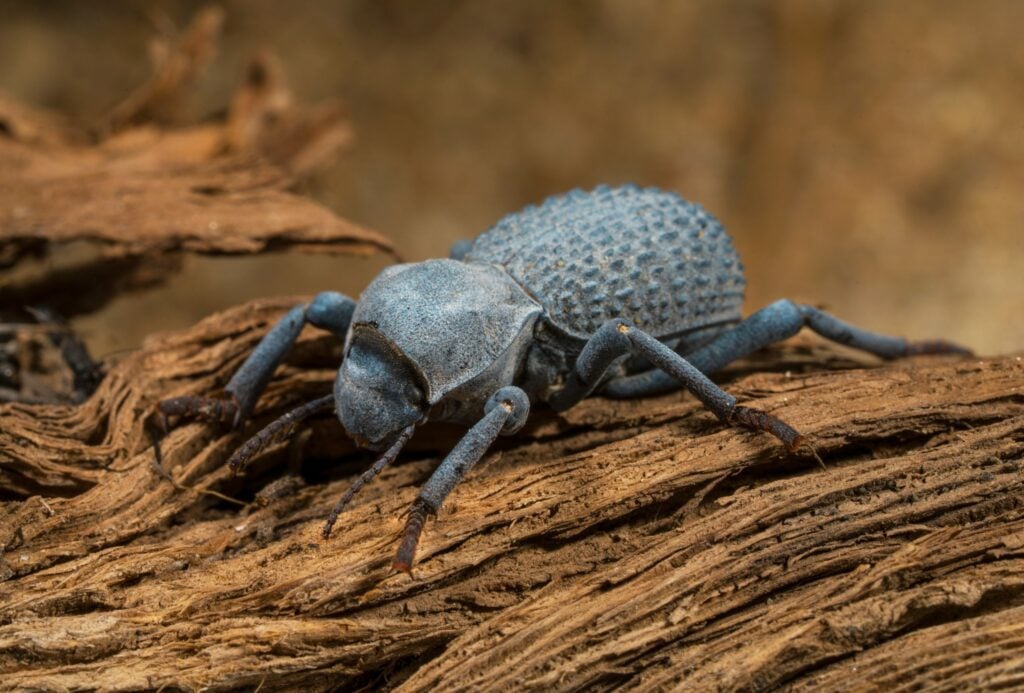The beetle is an insect with forewings that have been transformed into rigid wing casings or elytra that cover and protect the hind wings and abdomen. These insects belong to the Coleoptera order of the Endopterygota superorder. Their front wings have solidified into wing cases, called elytra, which distinguishes them from most other insects. Did you know what insect has the toughest exoskeleton?
The diabolical ironclad beetle or known as the Nosoderma diabolicum has one of the most durable exoskeletons of any insect, allowing it to withstand forces up to 39,000 times its body weight.
What is a Nosoderma diabolicum?
Nosoderma diabolicum or previously known as the Phloeodes diabolicus or the Diabolical Ironclad Beetle belongs to the Zopheridae beetle family. This insect is known for its toughness. Its elytra are thick, densely packed, and interlocking, with intricate lateral support structures linking to the ventral cuticle.
Entomologists who are attempting to show their specimens face numerous challenges due to the shell. The stainless steel pins used for mounting cannot be used to mount the beetles; instead, they must drill holes in the shell where they want the pin to go. (Source: Science News)
How Tough is the Exoskeleton of the Nosoderma diabolicum?
The exoskeleton of the Nosoderma diabolicum can withstand being run over by a sedan twice over. In fact, this beetle can withstand being crushed by 39,000 times its body weight, roughly the same as a human sustaining the weight of 125 blue whales stacked on top of each other.
Researchers from Japan, Indiana, and California recently tested the shell’s capacity to endure a maximum force of 149 Newtons and average power of 133 N without shattering it. (Source: Science News)
What makes the Nosoderma diabolicum so Tough?
The diabolical ironclad differs from other beetles. These insects have a flat profile that is low to the ground, making them incredibly tough to squish.
Biologically, the beetle employs several proteins that aid it to last longer. Its exoskeleton developed from a couple of forewings that spanned the creature’s back and linked to a second layout on the ventral side. The creature’s internal structure is identical to that of a Russian nesting doll.
Having these layers helps toughen the joint, It allows some of the stress to be dissipated.
Talla Moore, Roboticist and Evolutionary Biologist at the University of Michigan
Any attempt to crush the beetle instead redistributes the stress across the beetle, causing the plates to bow outwards and flex rather than fracture. When the two pieces of the exoskeleton meet, they mesh like a jigsaw puzzle, adding to the exoskeleton’s potency. The bug is impermeable to both direct impact and crushing. The protection makes the beetle virtually impenetrable to predators, as most species cannot break through the exterior. (Source: Science News)
What is Nosoderma diabolicum’s Habitat and Diet?
This insect’s larval and pupal phases have been obtained on dead pecan wood, describing the species’ developmental site. Adult beetles are assumed to feed on the lichens that develop on the tree trunks. In wooded places, this beetle can be found clinging to tree trunks or the outer walls of houses. Adult beetles were gathered from oak tree trunks in the College Station, Texas area. (Source: Science News)
